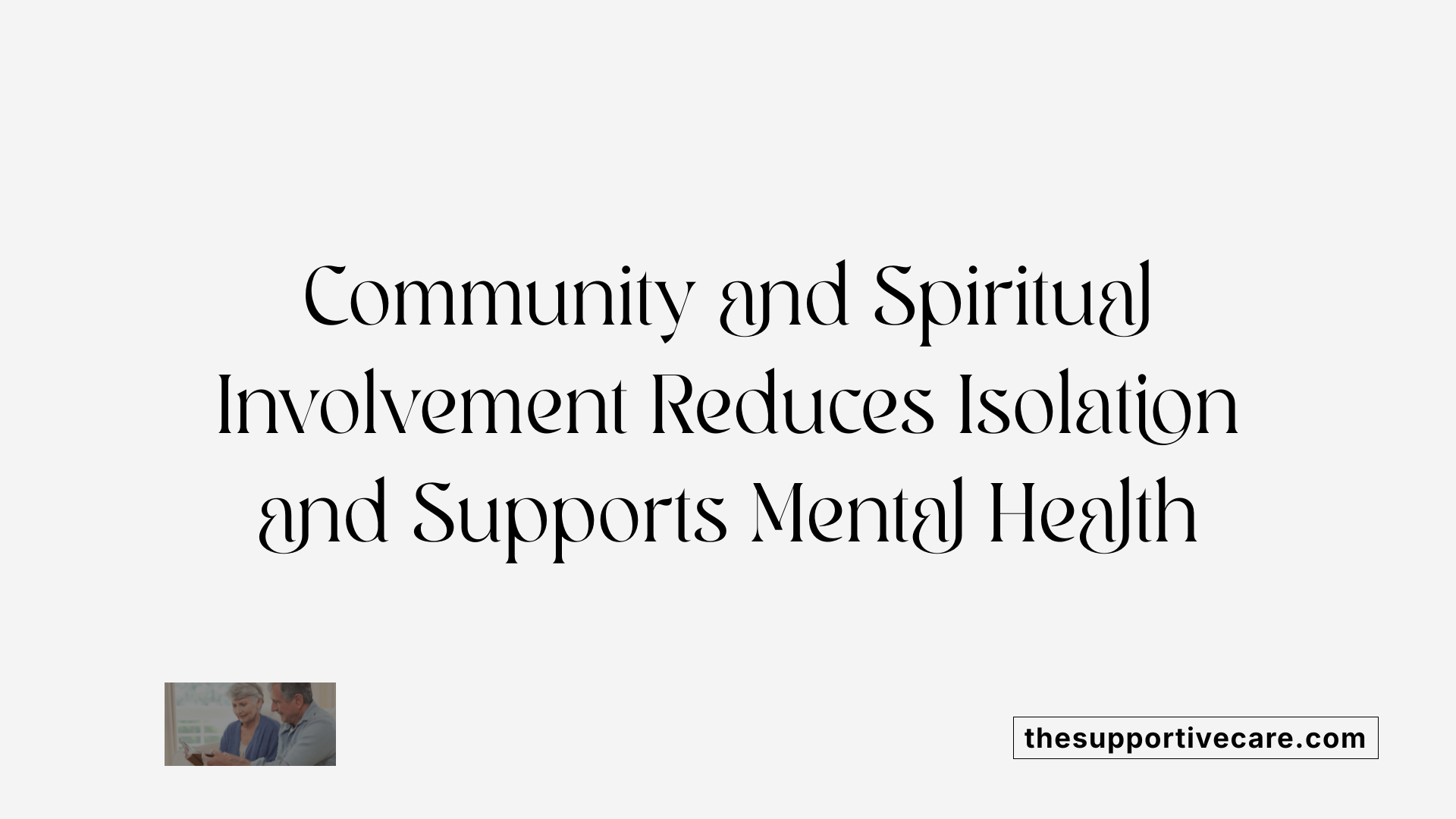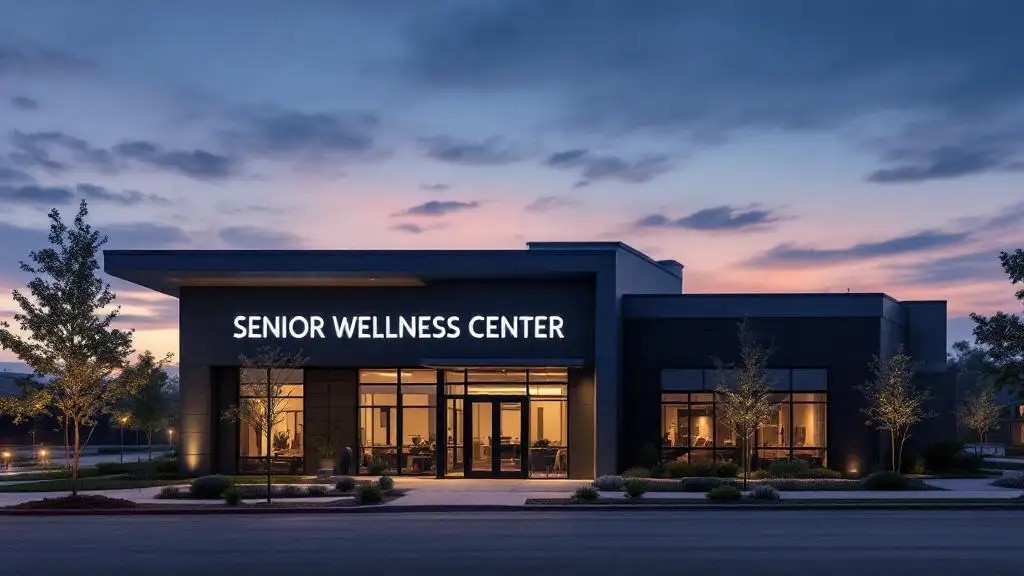Understanding Emotional Support Needs for Seniors with Disabilities
Seniors experiencing disabilities face unique challenges that can severely impact their emotional well-being and mental health. Many older adults contend with social isolation, chronic illnesses, and increased vulnerability to substance use disorders, making comprehensive emotional support essential. This article explores how evidence-based treatment services, social support networks, and tailored wellness strategies come together to improve mental health, substance use recovery, and overall quality of life in this population.
Comprehensive Treatment Services for Seniors with Disabilities

What comprehensive treatment services are available for substance abuse, mental health issues, and various forms of addiction?
Comprehensive treatment for substance abuse and mental health issues encompasses a wide spectrum of evidence-based services tailored to meet various needs, particularly for seniors and individuals with disabilities. These services include medical detoxification, individual and group counseling, cognitive-behavioral therapy (CBT), and motivational interviewing, all aimed at addressing the complex challenges of addiction and mental health disorders.
Medication-assisted treatment (MAT) is a critical component, especially effective in managing cravings and supporting recovery from opioid and alcohol use disorders. Integration of mental health and substance use care ensures that co-occurring disorders are treated concurrently, improving overall outcomes. This integrated approach involves coordinated behavioral therapies, medications, and care management.
Older adults and people with disabilities benefit from specialized programs that consider their unique physical, psychological, and social needs. Treatment centers often provide customized care plans that incorporate trauma-informed care, peer support, and community-based strategies. Recovery support services and prevention efforts are woven into the continuum of care to promote long-term wellness and reduce relapse risks.
Organizations such as NewYork-Presbyterian and state behavioral health agencies provide tailored resources and services. These include access to comprehensive assessments, evidence-based interventions, and support resources that address the dual challenges of aging, disability, and addiction.
Overall, these comprehensive treatment services emphasize holistic, patient-centered approaches to improve quality of life and foster sustained recovery for seniors living with disabilities and behavioral health concerns.
Addressing Social Isolation and Building Support Networks

Role of social networks for older adults
Strong social networks are essential in helping older adults achieve and maintain recovery from substance misuse. These networks include family, friends, mutual-help groups, and religious communities, all providing emotional support and connection vital to well-being.
Impact of social isolation on mental health and substance misuse
Social isolation among older adults is common and significantly associated with increased risks of alcohol misuse, depression, cognitive decline, and deteriorating physical health. Isolation can exacerbate feelings of loneliness and stress, contributing to poor mental health outcomes and substance use disorders.
Assessment tools like Lubben Social Network Scale
To identify social isolation risks in older adults, tools such as the Lubben Social Network Scale (LSNS) are used. This scale measures the size and closeness of an individual’s social network, helping care providers assess social supports and target interventions where needed.
Interventions to promote social support
Effective strategies to enhance social support include actively engaging family and caregivers, implementing neighborhood support initiatives, and befriending programs that pair seniors with volunteers. Online social networking options also offer accessible ways to reduce isolation, especially for homebound individuals.
Religious and spiritual community involvement
Participation in religious and spiritual communities plays a powerful role in decreasing social isolation among older adults. These communities offer a sense of belonging and purpose, which can improve both health and recovery outcomes by fostering continuous social engagement and emotional support.
Tailored Wellness Strategies and Chronic Illness Management

What Are Integrated Self-Management Programs Like CDSMP?
The Chronic Disease Self-Management Program (CDSMP) is a structured program designed to help older adults and those with chronic illnesses manage their health more effectively. It empowers participants to handle symptoms, maintain physical activity, and communicate effectively with healthcare providers, fostering independence and improved quality of life.
How Do Wellness Strategies Address Emotional, Social, Physical, and Spiritual Wellness?
Wellness strategies for older adults encompass multiple dimensions: emotional support helps manage stress and mental health symptoms; social connections combat isolation and improve mood; physical health involves proper exercise and nutrition; spiritual care, including participation in religious or community activities, supports meaning and purpose in life.
Why Is Managing Chronic Illnesses Alongside Behavioral Health Important?
Chronic physical illnesses are prevalent in older adults, often complicating mental health and substance use disorder management. Overlapping symptoms can affect adherence and recovery. Coordinated care models that integrate behavioral and physical health treatment support better health outcomes.
How Do These Strategies Support Recovery and Improve Health Outcomes?
Tailored wellness approaches, including self-management education, social support networks, and trauma-informed care, promote sustained recovery by addressing the whole person. They reduce risks linked to isolation and chronic illness while enhancing resilience and emotional well-being.
| Strategy Aspect | Description | Impact on Older Adults with Chronic Illness |
|---|---|---|
| CDSMP | Chronic disease self-management workshops and support | Empowers self-care, better symptom control |
| Emotional Wellness | Counseling, peer support, stress management | Decreases anxiety, depression, and substance misuse |
| Social Wellness | Family, friends, mutual help groups, befriending programs | Reduces isolation, improves recovery outcomes |
| Physical Wellness | Exercise, nutrition, medication management | Enhances physical health, aids chronic illness control |
| Spiritual Wellness | Religious/spiritual participation, meaning-making | Provides comfort and motivation during recovery |
Innovations in Behavioral Health Care Delivery
How is telehealth transforming behavioral health care?
Telehealth has emerged as a vital innovation in delivering behavioral health services, particularly benefiting older adults and underserved populations. It enables remote access to mental health and substance use disorder treatments, breaking geographic and mobility barriers. Digital therapeutics complement traditional care by offering evidence-based interventions via apps and online platforms, improving engagement and outcomes.
What role does trauma-informed care play in treatment?
Trauma-informed care models recognize the widespread impact of trauma and integrate this understanding into treatment plans. These models promote safety, trustworthiness, and empowerment, crucial for effective behavioral health interventions. This approach is particularly important for individuals with co-occurring disorders or histories of adverse experiences.
How do peer support programs enhance recovery?
Peer support programs utilize individuals with lived experience to provide emotional and social support. Such programs foster connection and trust, improve adherence to treatment, and reduce stigma. They can be integrated across clinical and community settings, reinforcing recovery journeys for people facing mental health and substance use challenges.
What community-based approaches improve behavioral health outcomes?
Community-based approaches focus on leveraging local resources and social networks, such as senior centers and religious organizations, to support emotional health and prevent isolation. Programs like befriending initiatives and online social networking platforms enhance social support, which is strongly linked to better recovery outcomes among older adults.
How is workforce development advancing coordinated care?
SAMHSA promotes workforce development to equip professionals with skills for integrated behavioral health care. Coordinated care combines mental health, substance use treatment, and physical health services, facilitating comprehensive support. Training and resources help providers adopt trauma-informed practices, utilize technological tools, and engage in culturally competent care.
These innovations collectively improve access, quality, and personalization of behavioral health services, aiming to better meet the complex needs of aging and diverse populations.
Resources and Crisis Support Tailored for Older Adults
SAMHSA Resources and Specialized Toolkits
The Substance Abuse and Mental Health Services Administration (SAMHSA) offers a rich selection of resources crafted to address the unique behavioral health needs of older adults. These include training manuals, evidence-based practices, and prevention toolkits tailored for senior centers and senior living communities. Focus areas cover emotional health support, suicide prevention, and integrated care approaches to mental health and substance use disorders.
Crisis Hotlines Supporting Older Adults
Multiple crisis hotlines provide immediate and confidential 24/7 support for seniors facing mental health emergencies. The nationally recognized 988 Suicide & Crisis Lifeline connects individuals to over 200 crisis centers across the U.S. The Veterans Crisis Line offers specialized support for veterans and their families. Additionally, local helplines like 211 Broward facilitate access to health, crisis, and human service resources.
Organizations Supporting Mental Illness and Substance Abuse
Groups such as the National Alliance on Mental Illness (NAMI) play a vital role in offering education, advocacy, and peer support for those impacted by mental illness. Behavioral health providers like Henderson Behavioral Health serve large populations including seniors, by delivering treatment, housing, and recovery support services.
Telephone Reassurance Programs
Programs such as ConnectingWithU provide free telephone reassurance services aimed at preventing isolation among older adults. These initiatives foster emotional support, social connection, and early identification of potential mental health concerns, which is critical given the prevalence of social isolation in this age group.
Public Health Guidelines and Training for Senior Centers
SAMHSA disseminates comprehensive training resources and guidelines specifically for senior centers, focusing on emotional health promotion and suicide prevention. These materials assist organizations in implementing effective behavioral health strategies and linking seniors to appropriate mental health and substance use disorder resources.
These combined efforts ensure seniors have access to specialized behavioral health support, crisis intervention services, and community resources essential for maintaining mental and emotional well-being.
| Resource Type | Examples | Description and Target Audience |
|---|---|---|
| SAMHSA Toolkits | Suicide prevention, emotional health | For senior centers and aging service providers |
| Crisis Hotlines | 988 Lifeline, Veterans Crisis Line | 24/7 confidential support |
| Support Organizations | NAMI, Henderson Behavioral Health | Education, advocacy, clinical and recovery services |
| Telephone Reassurance | ConnectingWithU | Social connection and emotional support for isolated seniors |
| Public Health Training | Behavioral health promotion guides | Training for organizations serving older adults |
Challenges and Considerations for Seniors with Disabilities Facing Addiction
Why Are People with Disabilities at a Higher Risk for Substance Use Disorders?
Seniors with disabilities face a significantly increased risk of substance use disorders (SUDs) compared to the general population. Data indicates that adults with disabilities are 2 to 4 times more likely to develop SUDs. For instance, among the 54 million adults with disabilities in the U.S., approximately 4.7 million have both an SUD and a co-existing disability. Several factors contribute to this heightened risk, including chronic pain, social isolation, and challenges managing multiple health conditions.
How Does Medication Use Contribute to Opioid Addiction in Disabled Seniors?
A critical consideration is the use of prescription medications, especially opioids, for managing chronic pain, common among seniors with physical disabilities like spinal or orthopedic injuries. While these medications offer relief, they also carry a high potential for addiction. Studies highlight that disabled individuals are more likely to misuse opioids yet are less likely to receive adequate addiction treatment, compounding their vulnerability.
What Is the Relationship Between Mental Health and Addiction in This Population?
Many seniors with disabilities also experience co-occurring mental health disorders alongside their addiction. This complex interplay often involves depression, anxiety, or bipolar disorder, which can increase susceptibility to substance use as a coping mechanism. Mental illnesses can both contribute to and result from substance misuse, complicating diagnosis and treatment.
Why Is Integrated Treatment and Accurate Diagnosis Essential?
Effective care for seniors with disabilities requires comprehensive, integrated treatment addressing both mental health and substance use disorders simultaneously. Accurate diagnosis by healthcare providers trained in co-occurring disorders is vital to reduce misdiagnosis and develop effective treatment plans. Integrated care models often combine behavioral therapies, medications, and case management to ensure coordinated support.
How Does Addiction Impact Disability and Vice Versa?
Addiction can both contribute to the development of disabilities—such as through injuries from falls or accidents—and worsen existing symptoms of mental and intellectual disorders. Chronic substance use also risks causing new disabilities, like nerve damage or lung disease. Conversely, living with disability can increase vulnerability to addiction due to physical limitations, emotional distress, and social isolation.
This nuanced relationship underscores the importance of tailored prevention and recovery strategies for seniors with disabilities, promoting holistic wellness and access to specialized behavioral health resources.
Moving Forward with Compassionate, Integrated Support
Emotional support for seniors experiencing disability requires a multi-faceted, evidence-based approach that recognizes the complexity of co-occurring mental health and substance use disorders alongside physical challenges. By integrating comprehensive treatment options with strong social networks, tailored wellness programs, and innovative care models, communities can significantly improve recovery outcomes and quality of life for these vulnerable populations. Continued education, crisis resources, and coordinated care efforts will be essential as the aging population grows, ensuring that disabled seniors receive the empathy, respect, and support they need to thrive emotionally and physically.




































































































